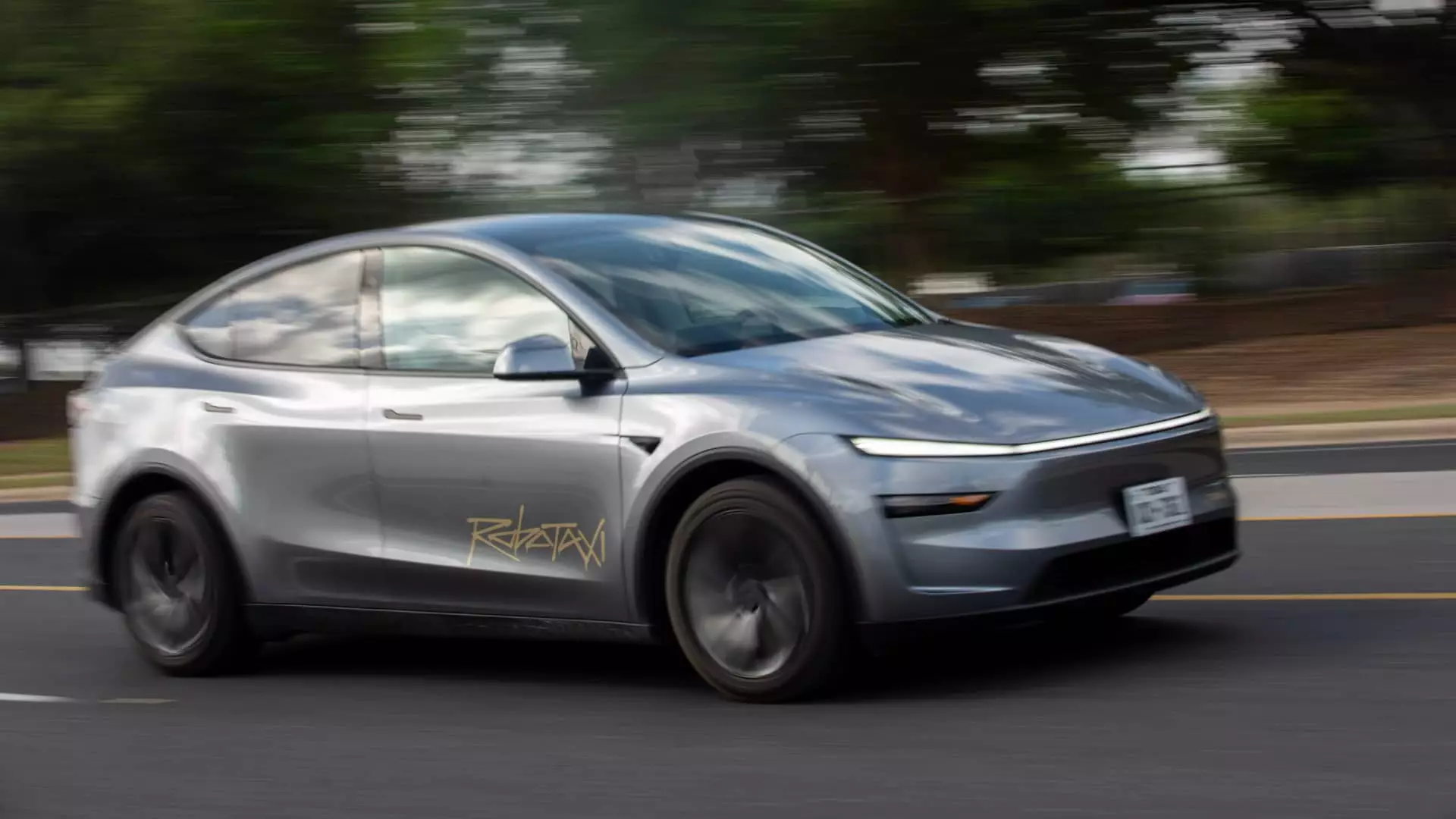Tesla’s ambitious announcement to expand its robotaxi operations signals a bold new chapter in the evolution of transportation technology, promising a future where human drivers could become obsolete. However, beneath the glossy surface of this vision lies a murky reality—regulation, legality, and safety hurdles threaten to derail Tesla’s plans before they even gain full traction. The company’s CEO, Elon Musk, is no stranger to stirring excitement with lofty promises, but the stark truth is that Tesla’s so-called robotaxis are far from being truly autonomous on public roads, especially in heavily regulated states like California.
California regulators have made it crystal clear that Tesla cannot legally offer autonomous passenger services without a human driver present. According to the California Public Utilities Commission (CPUC), Tesla’s current permits only authorize non-AV (autonomous vehicle) rides with a human driver on board. This restriction is not merely bureaucratic nitpicking; it underscores a fundamental barrier between Tesla’s aspirational tech and current legal standards. No matter how advanced Tesla’s software may seem, the law insists there must always be a qualified human ready to intervene—a fact that Tesla appears keen to bypass or sideline in its public messaging.
This discrepancy between aspiration and regulation reveals a deeper strategic flaw in Tesla’s approach. Instead of working collaboratively with regulators to meet safety standards, Tesla’s narrative suggests a tendency to push the boundaries of legality and public perception, which could ultimately jeopardize broader acceptance of autonomous vehicles. The company seems to position itself as a pioneer, yet it appears unprepared for the intricate web of state and local rules that govern autonomous driving.
Misleading Promises and Blurred Lines
Tesla’s marketing of its driver assistance systems—formerly called Autopilot and Full Self-Driving (FSD)—has long been a source of controversy. Despite branding that implies a level of autonomy, Tesla explicitly states in its manuals that these systems require active driver engagement and cannot be fully trusted to operate independently. However, Tesla videos shared on social media often depict drivers with hands off the wheel, prompting regulatory and consumer concerns about misrepresentation.
California’s Department of Motor Vehicles (DMV) is actively investigating these claims, arguing that Tesla may have overstated the capabilities of its driver-assist technology. The DMV’s stance is that Tesla’s marketing could mislead consumers into believing they can rely on Tesla vehicles for autonomous travel, which is far from the truth. If regulators move to suspend Tesla’s license, it would reflect a significant setback, emphasizing the importance of truthful communication and rigorous safety certification in autonomous driving development.
Tesla’s bid to expand its robotaxi service through a permit allowing work with friends, family, and select public members under existing charters smacks of a cautious step—one that still doesn’t align with autonomous ride-hailing ambitions. Tesla coupling these operations with its “early access” program only underscores a testing approach that seems to prioritize market presence over legal compliance and long-term safety.
In an era where autonomous vehicle technology is progressing rapidly, Tesla’s approach could be viewed as overly aggressive, risking public trust and safety—two variables that should never be compromised in the pursuit of innovation.
The Tensions Between Innovation and Regulation
In practice, Tesla’s operations in Austin, Texas, are already indicative of how the company is navigating the liminal space of autonomous mobility. Limited to daylight hours, good weather, and roads not exceeding 40 mph, Tesla’s Austin robotaxi service demonstrates a cautious step toward full autonomy. Still, it relies heavily on human supervisors—an acknowledgment that Tesla itself hasn’t yet mastered the level of safety and reliability needed for unsupervised autonomous driving.
The difference in regulatory environments across states becomes starkly apparent when contrasting Tesla’s trajectory with that of Waymo. Waymo achieved full driverless ride-hailing permits in California earlier this year, establishing a credibility that Tesla still lacks. While Waymo operates with extensive regulatory approval and transparent communication, Tesla’s secretive expansion plans and allegations of misleading marketing create suspicion and skepticism among regulators, local officials, and the public.
Community engagement, transparent communication, and adherence to safety standards are as critical as the technology itself. Tesla’s apparent neglect in these areas suggests a shortsighted view—believing technological prowess alone can override the necessity of regulatory compliance and public trust. This mindset risks alienating communities and governments that ultimately hold the keys to widespread autonomous mobility deployment.
The High Stakes of Tesla’s Ambition
Tesla’s push into autonomous ride-hailing is not merely a technological challenge; it’s a strategic gamble that could redefine liability, safety, and corporate reputation. If regulators take a hard stance against Tesla’s current approach, the company’s plans for large-scale robotaxi deployment could be stunted—delaying consumer access and potentially dampening investor confidence.
The underlying issue remains: Tesla seeks to position itself as a leader in autonomous vehicles without the groundwork of proper permits, comprehensive safety validation, and community engagement. This reckless pursuit of market dominance risks catastrophic consequences if safety standards are compromised, or if the vehicles fail in complex real-world scenarios.
Moreover, this push raises questions about the ethical obligations of automakers venturing into autonomous technology. Should profit and market share take precedence over meticulous validation and public safety? Tesla’s bold claims, combined with regulatory pushback, highlight the peril of rushing innovative endeavors without due diligence. The company’s trajectory might be a lesson in hubris—an open-ended gamble that could ultimately cause more harm than good if not corrected before it’s too late.

